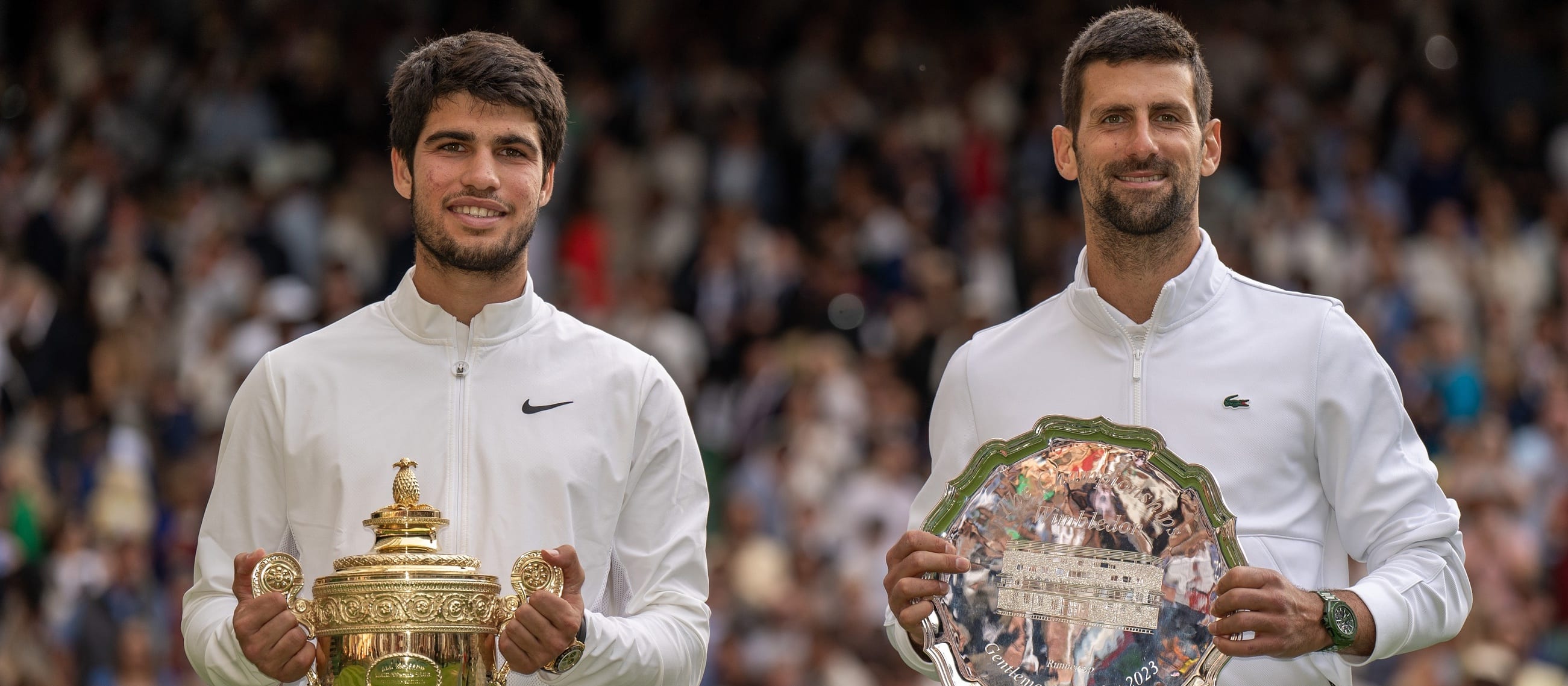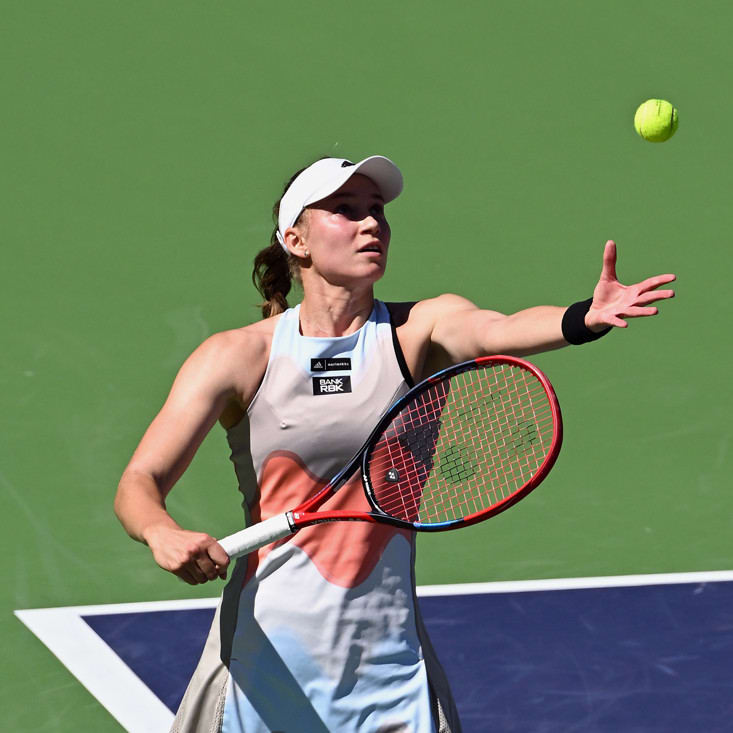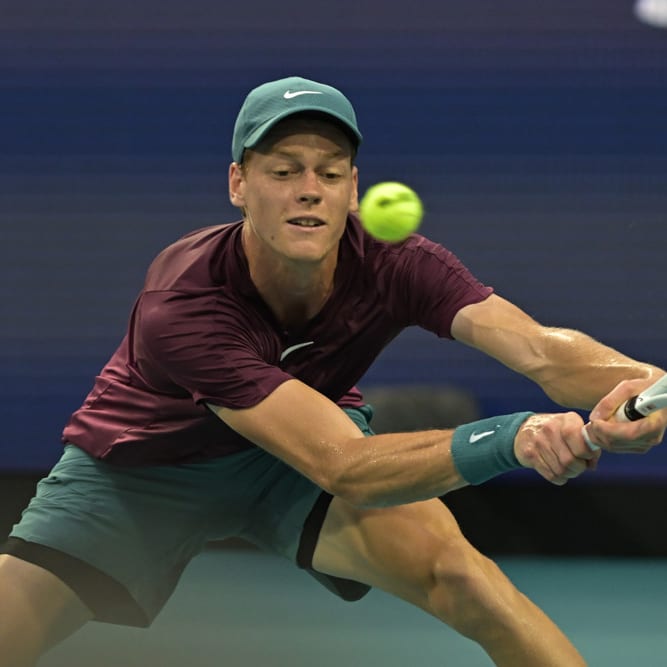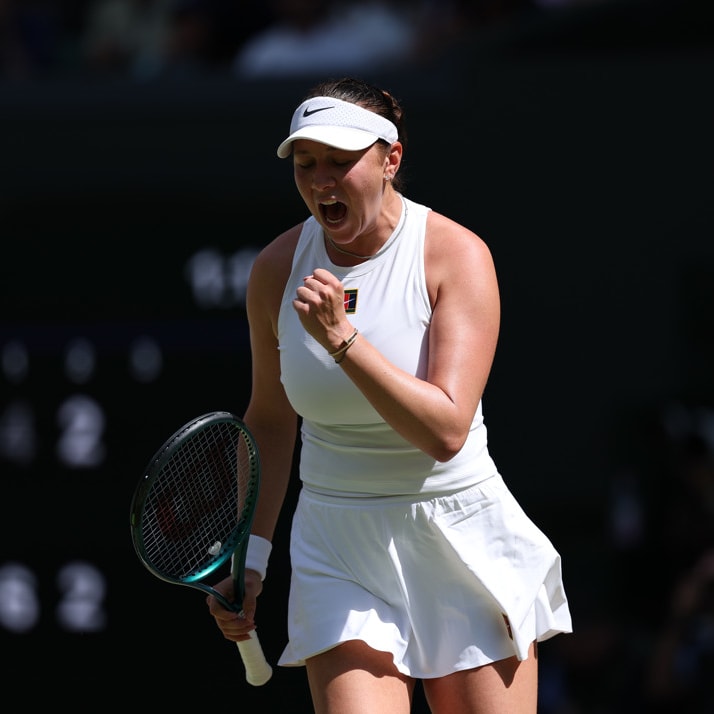Wimbledon is more than just one of four Grand Slams. It's the oldest and most prestigious tennis tournament in the world, steeped in tradition and achievement. In the modern era, we have seen numerous classic Wimbledon matches signify a changing of the guard. When 19-year-old Roger Federer beat seven-time Wimbledon champion Pete Sampras in the fourth round in 2001, it was apparent that a new face of tennis would soon arrive. When Federer finally captured his first Grand Slam title two years later at Wimbledon in 2003, Sampras had already retired with a men's record of 14 Grand Slam singles titles, and the Federer era officially began. Thanks to a period of remarkable dominance, Federer surpassed Sampras' Grand Slam record with his 15th at Wimbledon in 2009, and he ultimately finished with 20 Grand Slam titles.
Just seven years after Federer stunned Sampras, arguably the greatest match ever played at Wimbledon marked the arrival of another tennis GOAT. When Federer and Rafael Nadal faced off in the 2008 final, Federer was the five-time defending champion at Wimbledon, while all four of Nadal's Grand Slam titles had come on the slow clay of the French Open. The 22-year-old Nadal beat Federer on Federer's favorite surface in a 6-4, 6-4, 6-7, 6-7, 9-7 thriller, emerging from Federer's shadow to share the spotlight atop the men's game. That 2008 Wimbledon final occurred during a stretch of 18 Grand Slams during which all but one was won by Federer or Nadal. The only interruption came courtesy of a player who will forever be remembered in the same breath as those two: Novak Djokovic at the 2008 Australian Open.
Djokovic showed what he was capable of down under with one of the greatest Grand Slam performances of all time, dropping just one set en route to the title in 2008 while beating Federer in a straight-sets semifinal along the way. Born one year after Nadal and six years after Federer, Djokovic peaked later, but as they say, slow and steady wins the race. After 2008, Djokovic took three years to get another Grand Slam victory, but his 2011 triumph at the Australian Open signified the beginning of his era of dominance. Djokovic won three slams in 2011, achieving a feat he has since replicated in 2015 and 2021, with a chance to do so again at this year's US Open.
Nadal briefly climbed to the top of the mountain with his 21st and 22nd Grand Slam titles to begin 2022, but Djokovic now sits in sole possession of the all-time record with 23 Grand Slams. The success of the big three is all the more impressive considering most of their accomplishments came while fending off the other two plus Andy Murray, whose dominance against the rest of the field suggests he could have approached Sampras' mark of 14 Grand Slams had he played in another era. Instead, Sir Andy has had to settle for three. Sampras retired with the record after winning the 2002 US Open. Of the 82 Grand Slams since, 65 have been claimed by Federer, Nadal, or Djokovic, with each getting over 20.
Federer was lucky to be the oldest and first to peak of the big three, which helped him significantly pad his total before Nadal or Djokovic were ready to challenge him. He's retired and will finish with 20 majors. Nadal has had the most injury problems of the big three and has been unlucky that only one of the four Grand Slams is played on his preferred clay courts. If Nadal's clay court dominance instead occurred on hard courts, he could be pushing for 30 majors. As things are, he's rehabbing a major hip injury and hoping to give it a go for one final year next season. Getting one more slam to tie Djokovic at 23 is just about the best-case scenario for the Spaniard at this point. Djokovic is reaping the benefits of his superb fitness, coupled with the advancements in nutrition, racquets, and string technology that are allowing more and more players to thrive into their mid-30s. Coming into this year's Wimbledon, Djokovic had won six of the previous eight majors he entered, capitalizing on Federer's decline and Nadal's injuries. A couple generations of players have come and gone without mustering much of a challenge against the big three, but that all changed with Alcaraz's ascent.
In 2023, an epic Wimbledon match once again marked a career-defining achievement for a talent destined to go down in the history books. Alcaraz was no stranger to success, having already won last year's Djokovic-less U.S. Open and captured the No. 1 ranking, but his loss to Djokovic at the French Open just a month earlier showed that Alcaraz still had a substantial gap to close in best-of-five set play. Djokovic came into Wimbledon as the clear favorite after having won the last four times the event was held, but Alcaraz looked much more comfortable on grass than he had in his previous two trips to the All England Club, so at least some brave prognosticators predicted that he was capable of dethroning Djokovic.
It looked like the grizzled veteran was getting ready to teach the 20-year-old upstart another painful lesson when Djokovic took the first set of the Wimbledon championship match 6-1, but Alcaraz battled back and won a pivotal second-set tiebreak, ending Djokovic's remarkable streak of 15 consecutive tiebreaks won. The Spaniard then seized control with a 6-1 third set, highlighted by a 26-minute game that gave Alcaraz a double-break lead. Great champion that he is, Djokovic reclaimed momentum with a 6-3 fourth set. Djokovic wasn't going to pass the torch willingly, but the aggressive Alcaraz was able to take it in a fifth set summed up by one staggering stat: Alcaraz hit 18 winners to Djokovic's three as the Spaniard won the title 6-4 in the fifth after four hours and 42 minutes.
Thanks to Alcaraz's epic Wimbledon performance, what could have been a 23-major gap at 24-1 is suddenly 21 at 23-2. So, does Carlitos really have a chance to keep racking up enough majors to one day challenge Djokovic's record, or has the greatness we've witnessed in the last two decades completely decoupled expectations for any promising young talent from reality? Let's examine some of the factors that could work for or against Alcaraz moving forward after this potential tipping point in his lengthy chase towards Djokovic's majors record.
Alcaraz calls Jannik Sinner his greatest rival, and it isn't hard to see why. The two young stars have already had some titanic battles, splitting six matches over the past two years. Those clashes include a Sinner victory at Wimbledon last year and Alcaraz's five-set triumph at the US Open, where he saved a match point and went on to win the title. Considering Alcaraz is almost two full years younger and already has two major titles while Sinner just reached his first Grand Slam semifinal at Wimbledon, this rivalry is likely to be more Sampras-Andre Agassi than Bjorn Borg-John McEnroe. Sampras finished with a 14-8 edge in slams and 20-14 head-to-head against Agassi, while Borg and McEnroe split 14 matches evenly and Borg had an 11-8 Grand Slam edge.
Speaking of Borg, his career showcases another reason why we have started to see elevated individual slam counts in recent years. Borg won four consecutive French Opens and five straight Wimbledons, but he played the Australian Open only once and retired at 25. Careers are lasting longer than ever, and hardly anyone is willingly skipping Grand Slams these days, but injuries remain potential impediments to greatness. US Open champions Juan Martin del Potro and Dominic Thiem were never the same after their respective wrist injuries, and Alcaraz missed this year's Australian Open due to a leg injury, showing that he also isn't invulnerable.
While staying healthy will be critical as Alcaraz tries to chase down Djokovic, medical progress continues to minimize the long-term impacts and recovery times for many injuries. Another recent trend working in Alcaraz's favor is the convergence of the surfaces. Grass and hard courts still play faster than clay, but the difference in court speeds has gradually gone down. This change means a player's style needs less adjusting to find success at the different majors. Most critically, the short turnaround between the French Open on clay and Wimbledon on grass is far less daunting – Djokovic didn't even play a grass-court tournament between the two to acclimate, and he still mowed down the Wimbledon field prior to the final.
Ultimately, if Alcaraz can stay healthy, the most important factor affecting his Grand Slam total will be just how long it takes for the next Alcaraz to emerge. If Nadal and Djokovic were another five years younger, Federer could easily have won 10 more slams. If not for Alcaraz, Djokovic's current period of dominance would have no end in sight. Sinner, Holger Rune, and Alcaraz's other contemporaries could steal some slams here and there, plus Djokovic and 27-year-old Daniil Medvedev are still around, but all signs point to us entering an era of dominance from Alcaraz. If such an era lasts seven years, Alcaraz should crack the teens in slams. If we're talking a 14-year reign at or near the top of the game, then Alcaraz should be surpassing Djokovic with a Grand Slam total in the mid-20s by Alcaraz's mid-30s. Djokovic's second Grand Slam title didn't come until age 23, so Alcaraz has a three-year head start and may not need to dominate past age 35 to reach Djokovic's record.
So, where will Djokovic and Alcaraz end up? Djokovic is showing few signs of slowing down at this point and should get two more Grand Slams to bring his total of 25 -- one more than Margaret Court's current record of 24 major singles titles. Alcaraz should remain highly motivated as he tries to chase down Djokovic's milestones. Given what we know of the current men's tennis landscape and assuming the next Alcaraz is closer to five years old than 15 right now, Alcaraz is in position to reel off about two slams per year for the next decade-plus. Once the finish line is near, look for Alcaraz to keep pushing until he surpasses Djokovic's majors record with 26 Grand Slam titles. When it's all said and done, the 2023 Wimbledon final might just prove to be the decisive difference in who holds the most majors of all time.
Advance to the next round of your online wagering journey with the best Sports Betting Sites!





































